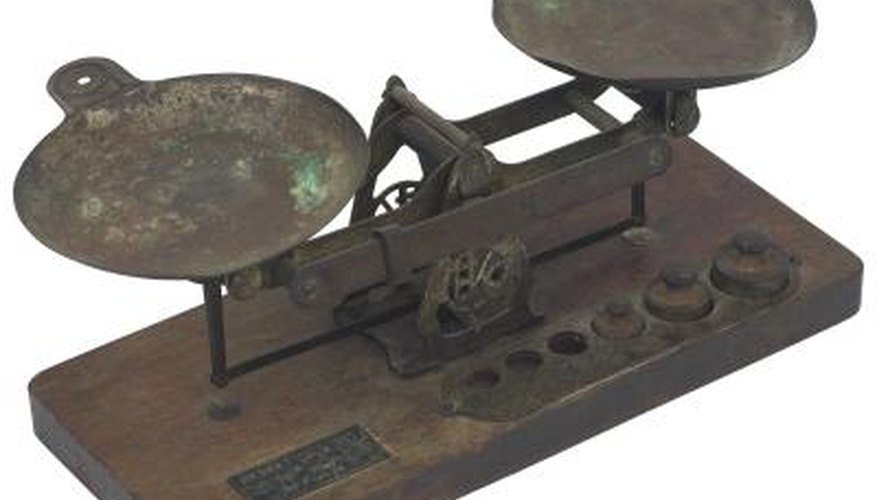Every chemical reaction is a reversible reaction with a specific rate constant. The constant, Keq, defines for equilibrium of the chemical reaction. You can solve for the concentrations for each of the products and reactants if you are given the Keq and the initial concentration of the reactants. Using the Keq and the initial concentrations, the concentration of both the products and reactants are determined at the equilibrium point.
Write the balanced chemical equation for the reaction. This equation provides all the information you will need to calculate the equilibrium concentrations of all the species with the given equilibrium constant Keq.
Write the generic expression for the Keq for the reaction. Assume the generic reaction is aA + bB <--> cC + dD. The expression for Keq is the products over the reactants. Keq = [C]^c_[D]^d / [A]^a_[B]^b. For example, if the reaction is H2(g) + I2(g) <--> 2 HI(g) and the value of Keq is 49, Keq = [HI]^2 / [H2]*[I2].
Assume that the initial concentrations of the reactants decreases by an amount x and the concentration of the products will increase by 2x at equilibrium. For example, assume the initial [H2] is 1.6M and [I2] is 2.4M. The Keq = 0.04 for the reaction. The final starting information is that the [HI] = 0.0M.
Define the concentrations of the reactants and products at equilibrium in terms of the initial concentration and x. For the example, the [H2] = 1.6 --x, [I2] = 2.4 --x and [HI] = 2x.
- Assume that the initial concentrations of the reactants decreases by an amount x and the concentration of the products will increase by 2x at equilibrium.
- The final starting information is that the [HI] = 0.0M.
- Define the concentrations of the reactants and products at equilibrium in terms of the initial concentration and x.
- For the example, the [H2] = 1.6 --x, [I2] = 2.4 --x and [HI] = 2x.
Substitute the concentration expressions into the formula for Keq. For example, the value of Keq = [H2] * [I2] / [HI]^2 = (1.6 -- x) * (2.4 -- x) / (2x)^2. Rearrange by algebra to yield Keq * (2x)^2 = (1.6 -- x) * (2.4 -- x).
Evaluate the equality and solve for x. For the example, multiply the right-hand side of the equation to yield 3.84 -- 4x + x^2. Substitute back into the equation and solve for x. the resulting equation is (0.04) * 4x^2 = 0.16x^2 = x^2 -- 4x + 3.84. Rearrange to generate the quadratic equation format, which is .84x^2 -- 4x + 3.84 = 0.
- Evaluate the equality and solve for x.
- For the example, multiply the right-hand side of the equation to yield 3.84 -- 4x + x^2.
- Rearrange to generate the quadratic equation format, which is .84x^2 -- 4x + 3.84 = 0.
Solve the quadratic equation where a = 0.84, b = -4 and c = 3.84. The result is x = 1.33M.
Substitute the value of x back into the expressions to obtain the concentrations of the reactants and products at equilibrium. For the example, [H2] = 1.6 -- x = 1.6 -- 1.33 = 0.27M, [I2] = 2.4 -- x = 2.4 - 1.33 = 1.07M and [HI] = 2 * x = 2 * 1.33 = 2.67.
Check your work by calculating Keq from these concentrations. Keq = (0.27) * (1.07) / (2.67)^2 = 0.2889 / 7.1289 = 0.04. This is the Keq quoted at the start of the problem.
